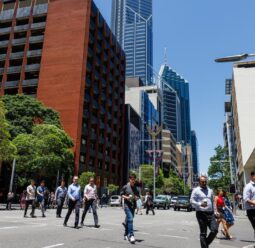Jobs market strong but Trump tariff bomb yet to explode
Australia's jobs market is holding up better than expected, but the impact of Donald Trump-imposed tariffs is yet to play out across the globe.
Australia's jobs market is holding up better than expected, but the impact of Donald Trump-imposed tariffs is yet to play out across the globe.

Treasurer Jim Chalmers remains confident 2025 will be better economically for Australians after struggles with the cost of living.
A very healthy jobs market is not adding to the case for a February interest rate cut, with all eyes turning to inflation data due in coming weeks.
Unexpected jobs figures have diminished hopes of an interest rate cut in February but favourable inflation data could put lower mortgage costs back on the menu.
Australia's unemployment rate has unexpectedly fallen to 3.9 per cent, bolstering the argument for the Reserve Bank of Australia to keep rates on hold.
Treasurer Jim Chalmers has defended Australia's fast-growing care economy, dismissing federal opposition criticism as rooted in "snobbiness".
Australia's labour market is slowly softening but the Reserve Bank is unlikely to be bothered by the latest jobs numbers ahead of its next board meeting.
Community organisations, unions and First Nations groups have demanded the government meet its commitments to support the unemployed and disadvantaged.
Higher interest rates are yet to make a serious dent in Australia's jobs market, with a larger-than-expected surge in employment recorded.
Australia's unemployment rate rose to 3.7 per cent in July, fuelling expectations the cash rate could remain on hold in a relief for home owners.
The jobless rate has fallen back and employment has jumped by much more than expected, bolstering the case for more interest rate hikes.
The tight jobs market is gradually loosening its grip due to higher interest rates and gloomy global economic conditions.
Official labour force data shows the unemployment rate lifting unexpectedly but there's still plenty of heat left in the jobs market.
Australia's unemployment rate has stayed at 3.4 per cent, with another 64,000 jobs added to the national economy, the latest labour force figures reveal.
The unemployment rate plummeted to 3.5 per cent in June, from 3.9 per cent in May, and was much better than economists were expecting.
The national unemployment rate fell to 3.5 per cent, which is the lowest rate since August 1974.
The unemployment rate was unchanged at 3.9 per cent in April as 60,600 people joined the workforce, the Australian Bureau of Statistics says.
The unemployment rate remained at 3.9 per cent in April after the Australian Bureau of Statistics downwardly revised the March result from four per cent.
The unemployment rate was unchanged at four per cent in March, as 17,900 joined the workforce, the Australian Bureau of Statistics says.
Australia's unemployment rate dropped to four per cent in February, with the prime minister lauding "greater growth" than the world's most advanced economies.
The unemployment rate held steady at 4.2 per cent in January, but there was a sharp drop in hours worked due to the impact of the Omicron variant.
The Australian Bureau of Statistics said the unemployment rate dropped to 4.2 per cent in December as a further 64,800 people joined the workforce.
The unemployment rate fell to 4.6 per cent in November as 366,000 people joined the workforce after the recent COVID-19 Delta lockdowns came to an end.